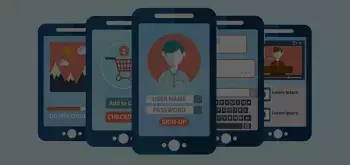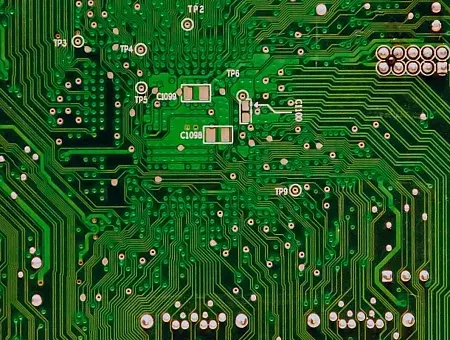
With each passing year, development in the field of web design is witnessing extensive changes. While we saw some crazy innovative stuff last year, the growing area of user experience has provided an opportunity this year for the companies to completely shift their mindset towards a more "experience based" approach. Thus, it becomes very important to catch up with the growing trends, rather than subsiding with the same old practices. When it comes to User Experience, the digital savvy users have high expectations - thereby making it necessary to raise the bar and come up with state of the art digital experiences. So where do you fit into all of this? The experiences of tomorrow are based on the interactions designed today. And to do so, it is not enough to look in front of you; You must look ahead, in the future.
Let the Videos Tell Your Story
Videos are the new stars in the market right now. A simple way of creating an intriguing user experience, videos engage the users pretty quickly! But you might wonder, videos have been an integral part of trends in User Experience for quite a while, what sets them apart now? Well, the art of using your videos to connect with your visitors is what makes all the difference now.
Take your videos beyond the usual interviews, how-tos and the product demo videos. Make them more exciting and interactive such that these videos become an integral part of the user experience.
Rich & Advanced Animations
One of the recent trends in user experience is of animation which began with CSS3 transitions, and from there, has traversed a long way in web applications. Now, while numerous CSS and JavaScript Libraries are presently dedicated to animation, animation has become a requisite to enhance a website’s experience.
However, proper usage of animations is an important factor. Based on the target audience and industries, using animations in a smart way improves the interface without being the distracting or disturbing element of a page.
Screens Are Not the Only Focus Anymore
Just a couple of years back, User Experience was entirely focused on the screens. May it be desktops, laptops, tablets or smart phones, screens were the only means by which the users could connect & interact. Today, technological advances; such as virtual reality, wearable technology and augmented reality, have rattled the conventional approach of UX designs. An important thing to watch out would be how these technologies bring “voice recognition” into the picture. Because in 5-10 years from now, nobody will use the server side or the front side and instead rely on the “voice side”.
Thus there is a need for a fluid responsive design with such technological advances. Responsive designs provide smoother User Experience, irrespective of the platform used. Thanks to various themes available through CMS such as WordPress, Drupal, and Adobe; development of responsive designs, even for the least experienced designers and developers, have become easy now.
There Is a New “Responsive” In The Market
Designers and marketers are now focusing on a new tactic in the market for a better conversion ratio. The “Age-Responsive Design” figures out which generation responds best to the images, videos and other aesthetics targeted to them.
And the best part about this tactic is that you do not have to devote the entire website to a particular demographic. Instead, you can make use of generation-specific images or videos in your social media strategies and the targeted landing pages to direct the demographics of your choice.
Speed Has No Limits
The most interesting ( I don’t know how interesting it is for you people out there) fact about the UI/UX of website is that, a single second can make all the difference between retaining your visitor, or not.
With everyone running behind speed ( for good reasons of course ) the page loading time becomes a critical factor in deciding the fate of your website. And to deal with all such impatient users, skeleton screens offer an additional option where the users will feel like the page comes faster than even a clock might show!! And while the skeleton screen loads, viewers can anticipate the content thus reducing the bounce rate of the website.
The “Bot Craze”
The world is going crazy about chat bots right now. Not that chat bots have not been there for a long time, but the advancements of AI on products such as Siri and Google Assistant has had a real impact on the users, thus opening up a new type of interface for people to interact with.
With the fast developments and growth of the messaging platforms and the various chat bots, "Conversational UX" will be one of the trends in user experience to watch out for, this year. While these advancements make way for a whole new level of possibilities, it is not going to be an easy task for the UX designers as it requires a different set of skills, something very different from what exists right now.
The “Choice”
User choice has always been the biggest challenge as it often introduces to various complexities and other involvements which result in a cluttered interface. However this year is going to be different. As the products get smarter, they will begin to take decisions on behalf of your users ( of course they will take the permission ) which will minimize the number of choices and its complexities to a great extent.
Thanks to automation, all this will now be achieved with ease and the users will still have enough control to reverse the decisions made by the products on their behalf.
Automation To The Rescue
A handful of new and automated practices have brought a lot of changes in the world of front-end development. One such practice is the use of task runners/build systems like Gulp and Grunt. These task runners perform various tasks that previously required effective manual effort.
Over the years, machines have advanced to such an extent that they tend to make very few mistakes. So, the more you can automate your task, the lesser issues you will have with your products or the services.
Key to interactive future
As Artificial Intelligence (AI) blends itself among various advanced products, the world is coming in terms with the reality that AI will be “the thing” in the future. With Apple’s ‘Viv’, Google’s ‘Google Now’ and many other AIs at our doorstep, designers realize that they need to observe & study the human behavior keenly if they want to provide the right choices for their users.
With Artificial Intelligence, comes interactive designs that are less about responding to a user’s request, but more about delivering the needs even before they express it! As the line separating Artificial Intelligence and natural life continues to diminish, designers need to create things that feel and act real resulting in smarter objects, products and environments.
With access to multiple AIs, these intelligent assistants need to be ‘helpful’ to one another. As individual AI companies fail to cooperate with one another in this competitive world, it’s up to the designers to deal with this and create designs that ease the heated relationship between various AIs in the near future.
It might still be far from reality, but the futuristic idea of artificial intelligence designing the websites and apps is something to look out for. Think about how you were working 5 years ago and how the advancements in tools, user behavior and user choice have changed the work dynamics today. This user behavior, understanding and choice will evolve in response to the various technological advancements in the future. And you can imagine how things will be in 5 years from now.



